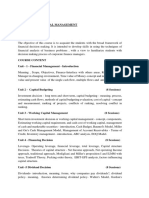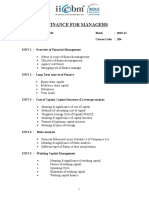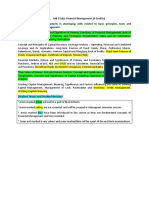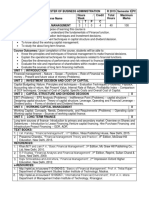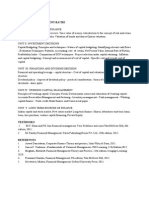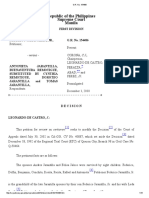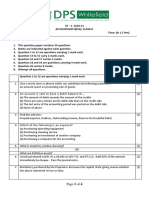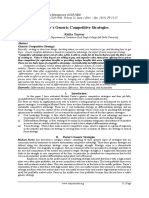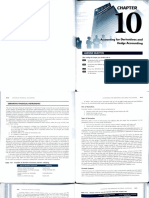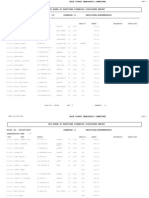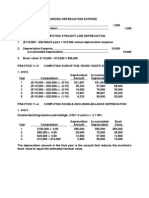0% found this document useful (0 votes)
82 views2 pagesFM Syllabus For Students
The document outlines the course structure for CORE XVI - Financial Management, aimed at B. Com and B.B.A students, with a focus on financial management concepts, capital structure, and working capital management. It details course objectives, unit topics including functions of finance, sources of finance, dividend theories, capital budgeting, and working capital management, along with recommended textbooks and references. The course comprises 60 teaching hours and is assessed with a theory to problem ratio of 40:60.
Uploaded by
vaishalichakravarthiCopyright
© © All Rights Reserved
We take content rights seriously. If you suspect this is your content, claim it here.
Available Formats
Download as PDF, TXT or read online on Scribd
0% found this document useful (0 votes)
82 views2 pagesFM Syllabus For Students
The document outlines the course structure for CORE XVI - Financial Management, aimed at B. Com and B.B.A students, with a focus on financial management concepts, capital structure, and working capital management. It details course objectives, unit topics including functions of finance, sources of finance, dividend theories, capital budgeting, and working capital management, along with recommended textbooks and references. The course comprises 60 teaching hours and is assessed with a theory to problem ratio of 40:60.
Uploaded by
vaishalichakravarthiCopyright
© © All Rights Reserved
We take content rights seriously. If you suspect this is your content, claim it here.
Available Formats
Download as PDF, TXT or read online on Scribd
/ 2



